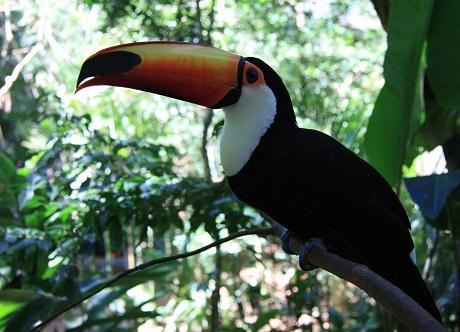A real life Disneyland

Rio's zoo gets a new look
Soon, a trip to Brazil will be even more exciting. To find yourself in Jurassic Park, you no longer have to go to the movies; all you have to do is pay a visit to Rio de Janeiro's zoo. Brazil's oldest zoological garden is undergoing an extreme makeover. Exotic animals and untamed nature, the country's most important attributes, will be getting a new stage.
The "Jardim Zoologico da Cidade do Rio de Janeiro" has been in existence since 1888. It is located in the São Cristovao district and is home to about three thousand different animal species. The redesign has been underway since the beginning of 2015. By the end of the year, a private operator will be selected through a public tender to take over the zoo that was previously run by the state. Rio’s city hall has announced that proposals can be submitted through the end of October. The successful bidder will invest 60 million reais (approximately eleven million dollars or fourteen million euros) to remodel and modernize the zoo within two years. Management of the plant will remain in the hands of the winner for thirty-five years with an option to extend. In order to transfer the Jardim Zoologico from public to private hands, an official procedure was carried out by experts to analyze and define the technical and financial framework.
The company Cataratas do Iguaçu S.A. (joint-stock company) is considered the favorite among the applicants. It currently manages the national park of the waterfalls of the same name, as well as the Fernando de Noronha marine national park and the AquaRio aquarium, which opened in 2016. The AG's model is as follows: Zoo visitors first enter a central plaza where restaurants and stores are located. From there, they can choose one of six thematic paths:
- Primates
- Birds
- Reptiles, amphibians, and insects
- Predatory cats
- Bears
- Savannah
The animals are not in cages but rather in large enclosures, and they are separated from the public by grass planes. In the savannah, an artificially created river delimits the area of the animal species native to Africa, such as elephants, giraffes, or lions. Zoo-goers will travel in boats past the animals. In the reptile area, visitors will be able to descend to the alligators and crocodiles in a protective capsule. A zipline, gondola, and 3D cinema complete the list of planned attractions.
The State of Rio will take on a supervisory role and will appoint officials to the new zoo, among other things. The entrance fee is to increase proportionally to the increasing entertainment value of the amusement park. The new zoo will cover a total area of 46 square miles (120 million) square meters. Part of it will be reserved exclusively for the animals and will not be accessible to the public. The goal is to double the number of visitors in thirty-five years.
The Brazilian public has been paying particularly close attention to the zoo's redesign since a report revealed the poor health of some of the animals. The state administrator, Fundacao RioZoo, denies this and says that the protection of wild animals is guaranteed, but the criticism may be seen as motivation and an opportunity for improvement. The important thing is to strike a balance between tourist interests and the welfare of the animals. Only time will tell whether the investment was worth the effort. After all, Brazil also has plenty of action to offer outside of this Disneyland project. Trekking fans get their money's worth, as do active explorers. Rio and its surroundings offer the Brazilian vacationer exciting sights of the animal and plant world outside of the zoo.
Source: extra.globo.com

